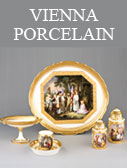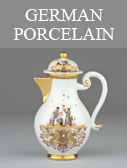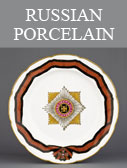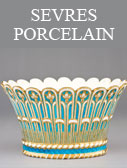 |
 |
 |
 |
Russian porcelain
Although porcelain originated in China over a thousand years ago, production in Europe only began in the early 18th century. One can trace the beginnings of its production in Russia to no other than Emperor Peter the Great himsel, whose appreciation of the medium can be seen in the early Delft tiles decorating the kitchen of Monplaisir Palace at Peterhof. It was in the early years of his daughter's reign, Empress Elizabeth, reign . The founding of this seminal institution was only made possible by the Russian discovery of how to make made by the gifted scientist Dimitriy Vinogradov in 1747-1748.
In Russia as in the rest of continental Europe, the ruling class dictated artistic taste throughout the 18th and 19th centuries. As the predominant styles of the time evolved, for example the shift from classicism to the Empire style, one can see the definite personal tastes of specific Russian rulers emerge in relation to the porcelain that was created at the time. Russian porcelain is characterized by the enormous services that were ordered by its vastly rich aristocratic patrons. The Orlov Service, given by Catherine the Great to Count Grigory Orlov no doubt in thanks for his pivotal role in the coup that placed her on the throne, is a perfect example of this. Consisting of over 2000 pieces when ordered, one can imagine the huge cost and effort such a commission would require not only dictated that such a creation would be a major influence on later commissions, but also that Catherine the Great herself no doubt had considerable input as to the overall look of the finished product.
Inextricably linked to the tumultuous history of their homeland, the fate of Russian porcelain was changed forever after the Bolshevik Revolution of October, 1917. The chaos that came about from a nation of people intent on avenging years of suffering endured at the hands of the aristocracy resulted in considerable looting and damage. The Marton Museum is fortunate enough to contain a number of Russian porcelain masterpieces, a collection notable both for its quality, as well as its geographic location outside of Russia.






